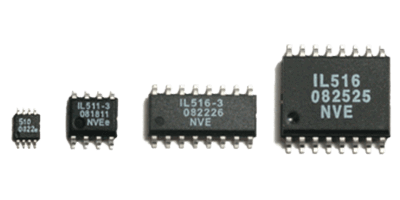What Is a Digital Isolator?

A digital isolator is a device used to isolate the transmission and reception of digital signals.
Insulation” is very important in electrical circuits, preventing equipment from shorting out or being damaged. In addition, having the necessary parts well insulated prevents current from flowing to other parts of the circuit, which helps eliminate noise and send normal signals.
Furthermore, digital isolators are electronic devices that are expected to be applied to a wide variety of equipment due to their long life and low power consumption.
Uses of Digital Isolators
Digital isolators are widely used in devices that require insulation in electronic circuits. First of all, they are used in industrial machinery where there are large voltage differences among devices. Power supplies that require large voltages or large motors and parts that operate with small voltages are located close together and must be isolated where there is a large voltage difference.
This is to prevent damage caused by the application of high voltage to parts that operate at low voltages. Next, it is also used for medical equipment such as X-rays and AEDs. These medical devices are often used with the hands, and the purpose is to prevent electric current from flowing outward and causing an electric shock.
In automobiles, digital isolators are used to protect ECUs and other in-vehicle devices in vehicles that use high-voltage power supplies, such as electric vehicles and hybrid vehicles.
Principle of Digital Isolators
There are two types of digital isolators: magnetic isolation and capacitive isolation.
1. Magnetic Isolation Method
Digital isolators with magnetic isolation use coils on the transmitting and receiving sides, respectively. By using coils on the transmitting and receiving sides, conversion between electric signals and magnetic energy is performed.
It can handle high speeds, but the disadvantage is that the faster the speed, the higher the current consumption. In addition, noise characteristics are inferior to those of the following capacitance-isolation type.
2. Capacitive Isolation Method
This is a digital isolator using a capacitor. In transmission and reception, electrical signals are converted into charge and discharge by using capacitors. The capacitive isolation method has particularly excellent noise characteristics and, like the magnetic isolation method, can be used at high speeds. In addition, current consumption is not related to speed, but rather is disadvantageous at low speeds.
Both methods have the advantage of long life and high speed, and have superior performance compared to previous isolators. However, the only disadvantage is that digital isolators can only handle digital signals and not analog signals.
Structure of a Digital Isolator
The structure of a digital isolator with magnetic isolation consists of two coils arranged in a super engineering plastic called polyimide. A pulse current is applied to one coil to generate a small local magnetic field, which in turn generates a current in the other coil.
A capacitively isolated digital isolator consists of a capacitor with a thin silicon dioxide (SiO2, silica) insulation layer.
Characteristics of Digital Isolators
Digital isolators have the following advantages over conventional optical isolators
1. High Dielectric Strength
Digital isolators are characterized by their large dielectric strength. The dielectric strength of optical isolators ranges from 1 to 20 Vrms/μm, while that of digital isolators with magnetic isolation is 300 Vrms/μm and 500 Vrms/μm for capacitive isolation, 10 to 200 times higher than that of optical isolators.
2. Long Life
Digital isolators are characterized by their long life. While optical isolators have a life expectancy of about 10 years, digital isolators are said to have a life expectancy of 25 years or more.
3. High Response Speed
While optical isolators can isolate signals up to about 20 Mbps, digital isolators can handle speeds of 150-200 Mbps, or about 10 times faster.
4. Low Current Consumption
Digital isolators can keep current consumption low. In particular, the capacitive isolation type can reduce current consumption regardless of the speed.